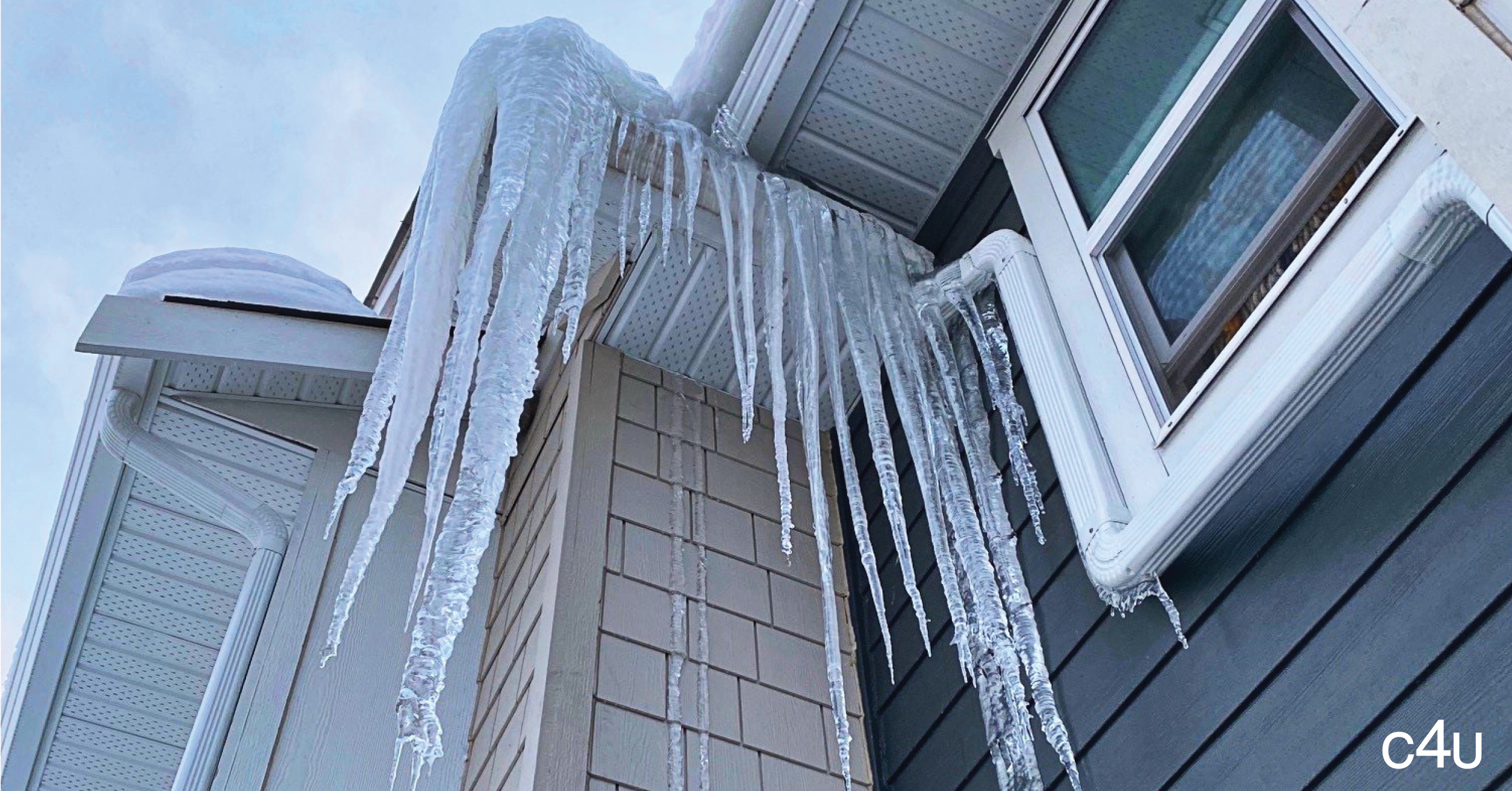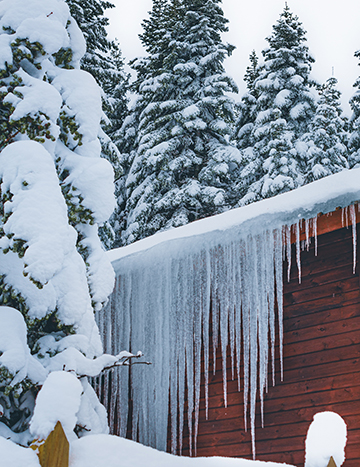
Winter has officially arrived and ‘tis the season for ice dams, those pesky build ups of ice and snow on your roof which - if unchecked - can cause damage to your property. While all the fluffy snow we get here in the Okanagan is picturesque for Christmas photos, it can become a heavy problem when it hits (and piles up on) your roof.
For this month’s blog post, c4u Inspections Ltd is going to talk you through the problem.
Ice dams are thick bands of ice that build up over time around the edges of your roof. Each layer of ice becomes a barrier that prevents water from melting snow from properly running off your roof, subsequently causing the ice dam to grow, exacerbating the problem. Over time these ice dams can cause significant damage to your home.
The main cause of ice dams is warm roofs. Heat and warm air leaking from the living space below rises into your attic space. If you don’t have the proper amount of insulation in your attic, heat will leak out through the roof causing any snow build-up to melt. This moisture then trickles down to the roof’s colder edges (around the gutter and eaves) and refreezes.
As more and more snow melts, the dam just keeps growing. This ice dam also prevents any other melting snow from getting into the gutter so it can properly run away. Instead, water backs up behind the dam or runs over the top of the gutter causing huge icicles to form down the side of the house.
The problem is a cumulative one. Every inch of snow that accumulates on the roof insulates the roof deck a little more. This keeps more heat in the attic, which in turn makes the roof even warmer and melts more snow. BTW, the worst ice dams usually occur when a deep snow is followed by very cold weather, as frigid outdoor temperatures ensure a fast and deep freeze at the eaves.
Ice dams can cause real damage to your home.
There are three potential causes of ice dams:
If you believe your home is a candidate for ice dams or you’ve had them before, you need to air seal and correct insulation before winter sets in. Spending the time and money to prevent ice dams is much easier, and more economical, than trying to fix them once they form.
The key to curing ice dams is to make sure the temperature of your roof stays consistent with the eaves. To do this, prevent inside air from reaching attic or roof space by sealing any leaks. You can also upgrade the insulation in your attic and add ventilation to the outside. This will ensure that warm air is quickly carried away from the roof.
Ice dam solutions for a given home may not be limited to air sealing and insulation, but it is a necessary component. You can do the insulation job yourself or hire an insulation professional to ensure it is done right.
Either way, pay special attention to ensuring the roof insulation is installed properly where the roof meets the wall. Sometimes space is limited in these areas (due to the roof slope) so people fail to install the proper amount of insulation in these areas. Of course, it is exactly this area where the damming occurs, so it is especially important to make sure you have both sealed and insulated it fully—without putting insulation on the eaves.
If this sounds expensive, remember that calling a roofing crew to remove ice and snow is costly and likely more expensive than having an insulation professional seal and insulate for you. Plus, if you try to fix the problem yourself you run the risk damaging the roof during the removal process, plus ice removal won’t stop ice dams from forming again. Insulation and air sealing are much more reliable and permanent ice dam solutions.
Keep an eye on your icicles. Small icicles that hang from your gutters during a brief melting period are not a concern. It’s when icicles grow, both in length and diameter, that you need to take notice. Long, thick icicles are too heavy to hang from your roof without being locked into an ice dam. That’s one way you know you have a problem.

Other indicators include:
Removing an ice dam can be quite dangerous. The safest bet is to have a professional, licensed contractor remove snow and ice from your roof surface, overhangs, eaves and gutters.
If you decide against professional help*, avoid these common mistakes:
* Remember: Any person on the roof during the winter or performing work on the roof from below is risking injury and risking damage to the roof and house. It is important to contact professionals to carry out this job.
Last, but not least, if you spot wet areas in your home remember to take photos documenting the damage and inform your insurance company. If you’re a tenant, notify your landlord.
Remember, c4u Inspections Ltd. is here to help with all your Okanagan residential or commercial property inspections. Give us a call on 250-212-4025.